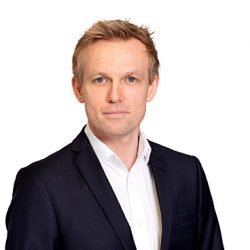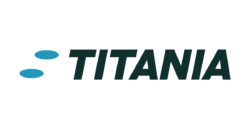2024-03-25

CEO Eirik Fadnes
"We are operating in an attractive market that is growing and supported by macro trends. We are the undisputed leader within thermal hydrolysis. I would claim that THP is synonymous with Cambi"
For those who have not heard of Cambi, can you speak about your business, what you do, and what markets you’re active in?
Cambi was founded in 1992 when we started to develop our thermal hydrolysis process (THP) solution. We use this technology as the basis for the solutions we provide to our customers around the world, which typically are municipal wastewater treatment plants in larger cities. Our business is traditionally project-based, and our delivery scope normally ranges from only the core THP equipment, to also delivering extended scopes with auxiliary equipment, to delivering the entire sludge line.
We installed our first facility in Hamar, Norway in the mid-90’s, a plant which is still running today. It’s been a long journey developing this market, as the ones introducing the solution to the industry. We started expanding internationally towards the end of the 90’s, and we gained traction in the UK market, the only privatized market in the world. We were successful in getting some important project references in the UK, which is also a key reason for why we have our production facility in the UK. The projects delivered in the UK has the capacity to serve around 50% of the UK population. Today we have expanded to 27 countries, on all continents around the world, and we have 89 reference cases. In just the last couple of years we have expanded to 6 new countries.
Over the past years we have focused on developing our services offering. This is where we offer our customers value-added solutions after we have delivered the THP equipment. For example we have developed CambiPLUS, which is a digital analytics platform that streams live operational data from the plant which enables customers to unlock efficiency gains and optimize plant operations. A value proposition is that no one knows better than us how to run a Cambi plant; we have a massive amount of data, we know how to sweat the assets, how to optimize it, and that’s where we can help our customers. We have had a good growth in the aftermarket helped by the expansion of our installed base of delivered projects. In large, our services offering forms a recurring activity base for us. Of course there are some fluctuations to be expected, driven by capacity expansion or upgrade projects for example. Since our installed base is soon reaching 89 facilities and increasing in age, we expect there to be an increased demand for such projects going forward.
Can you elaborate a bit about how THP works and the benefits of implementing a Cambi facility?
In essence, the THP is a giant pressure cooker. The sludge that is being treated gets applied with high temperature and pressure which changes the characteristics of the sludge, so it becomes much more effective in subsequent processing steps. Typically, our THP increases the biogas production by up to 50%, which is a renewable source of energy that is replacing fossil fuels. In addition, we deliver better dewatering which means you get more water out of the sludge, resulting in around 50% less biosolids. The end-product with THP is a high-quality biosolid which is sterile, odorless and safe to handle. In addition, the THP also leads to a more efficient process as it requires only a third of the digester capacity. A lot of the wastewater treatment facilities were built a long time ago, and cities have grown since then, but wastewater treatment plants are often constrained in terms of available space. Reducing the digester capacity with THP unlocks big savings in CapEx and enable plants to meet the need of a growing population and stricter regulations without having to build a whole new facility.
How long after a facility is finished does it start generating after-market sales, and what is the frequency of the sales?
There are certain things the plants must do every year, such as inspection and maintenance, and we can be on the ground supporting or taking full responsibility. But whether they have to replace something the first or second year depends on the volume treated through the facility, and the sludge itself and how it affects wear and tear. There is not one answer, but already in the first year of operation we start generating some aftersales which picks up over time. Sometimes it’s part of the initial contract that the customer will get let’s say one year of spare parts for example. Upgrade projects depends on what they are designed for, for example wanting additional redundancy or improve the energy balance. Our THP is a very robust product, and normally it takes a several years of operation before we would deliver upgrades.
Can you speak more about the strategic shift away from DBFO?
We did not have any DBFO or ownership in any plants when we made the decision to change our strategy. We are not actively seeking to own plants, but we remain flexible in the delivery model depending on what is best for the customer. We are open to owning, but up to a level where it does not tie a lot of capital, as opposed to our IPO when we raised cash to invest in the plants. We want to operate the plant, but now own it, because we want to remain a neutral technology solutions supplier. Our overall objective is to sell as many THP’s as possible, making it available to all bidders, because then we also may capture the aftermarket potential. As mentioned, we believe we are well positioned to assist our customers in optimizing operations, and will continue to offer this as part of our Services offering.
How is the company securing international contracts?
There are regional differences in dealing with a city or municipality, but when we enter a new market, a general rule is that the biggest city or the capital with the largest wastewater treatment plant is first mover. They are often using international consultants, so when we are dealing with a customer abroad, we often meet the same consultant firms
The biggest difference is the process leading up to the project. It is often large and critical infrastructure projects that takes time to develop. The timeline differs, the longest normally being the first project in a new market. But the effort we put in early does not take many resources, it’s a quite natural process where we keep an eye on the matureness of the market.
For example, it took 10 years to get our first project in the US but after that we successfully continue to expand in the market more quickly. Investing in sales and marketing is key, and we have seen that in markets that are maturing, we can get better returns on these activities. One of the biggest hurdles we have is in marketing, it’s not only about convincing customers that Cambi has the best and future proof solutions, it’s getting to the table in the first place. It is key that our customers have knowledge that Cambi and our THP technology exists.
How do you expect the backlog to develop in 2024?
In the Q4 presentation we did not guide on order intake, but we guided on backlog conversion for the next years which is something we will continue to guide on. The backlog of 1.5 BnNOK will be executed mainly in 2024 and 2025. It’s difficult to predict the timing of when new projects will be signed, for example in Q3 we had an all-time high order intake, and in Q4 we had no order intake. We publish quarterly reports, but Cambi is a company that you have to view on a more long-term perspective.
How long does it take from project start to Cambi getting paid in full?
It depends on the project scope, but they are usually executed in 24-30 months from signing the contract to commissioned and in operation. If we have the full sludge line with all the equipment, the project has a longer duration at around 3-4 years. It also depends on what part of the world we are in. Sometimes the tail of the project can take longer because the customer is delayed, but that is a very small portion of it. The milestone payments and the cash need for delivering the projects depends on the type of project and the delivery, but generally we don’t require substantial working capital to grow. For example, in our Capital Markets Update in 2023 we showcased an example where we were paid 40% shortly after project commencement, which allowed us to be cash positive during the rest of the project. It’s all about how we negotiate the terms with the clients, but this has been an important step for us to be able to scale our delivery model.
Our end-customers are normally municipalities or city councils, and they may use consultants in their project planning, and they may decide early that the project will include a THP, which is key to designing the rest of the plant. As the project develops, a main contractor is awarded and that is the contractor that contracts with Cambi. Payment security will vary from country to country, but as we have the city as the end customer it gives confidence that we will be paid in full. Loss on receivables is not a major concern.
Where do you see Cambi in three years?
The world is going in one direction. More and more utilities are setting the ambition to be climate neutral. If they are serious about making meaningful reductions, something will need to start happening when you are closing in on 2030 if it is not already in the planning. One of our value propositions is that you can make a positive contribution to your climate goals and at the same time save money. How can you say no to that?
In my view, the drivers for our solutions will be even stronger than what they are today. In short, the stricter the regulation, the better it is for Cambi. And that is the direction not only in emerging markets, but also in developed markets. We are aware that competition will surface, so we are continuously investing in R&D as we need to stay in front. The installed capacity we will have in the 89 plants serves the equivalent of 118 million people, which is something we are very proud of, but it’s still only 1.5% of the global population, which gives an idea of the potential of our solutions.
Could you give three reasons as to why Cambi is a good investment today?
- We are operating in an attractive market that is growing and supported by macro trends. We are the undisputed leader within thermal hydrolysis. I would claim that THP is synonymous with Cambi.
- We have a proven technology solution with a unique value proposition that benefits our customers and the communities they serve.
- We have standardized and modularized our product offering, so we have a scalable platform positioned for future development.




